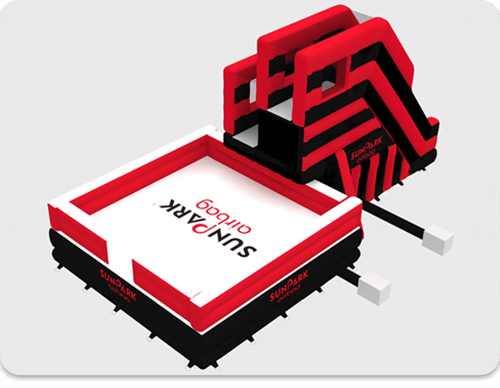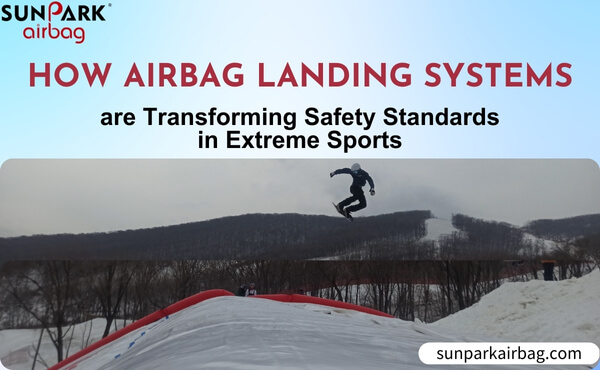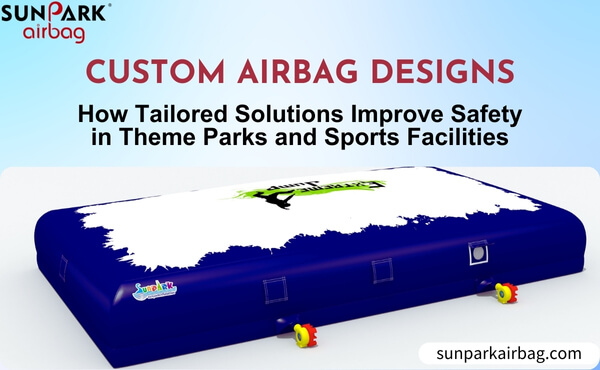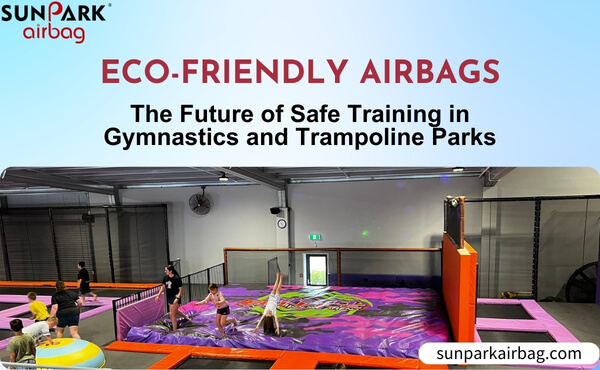The freefall airbag provides a safe and thrilling freefall experience for users aged 6 to 65 through a dual-platform progressive design (3m / 4m) and a high-impact absorption structure. To ensure safe use, maximize the lifespan of the equipment and enhance the user experience, the following operation norms and maintenance requirements must be strictly followed:
First, preparations before use: Safety inspection and adaptability assessment
Equipment integrity inspection
Airbag surface: Before daily operation, visually inspect the outer layer of the airbag to ensure there are no tears, wear or delamination. Pay special attention to the joints, inflation ports and the bottom buffer layer. Any damage exceeding 2cm should be immediately stopped from use and repaired.
Inflation system: Test whether the reading of the CO₂ cylinder pressure gauge is within the green safety range (200-250bar). The manual trigger device needs to pass the no-load test (without connecting the airbag) to ensure that the inflation is completed within 0.3 seconds.
Support structure: Check the tightness of the bolts at the connection between the platform of the jumping tower and the airbag. Use a torque wrench to confirm that all fixed points reach 120N·m to prevent loosening due to vibration.
User adaptability assessment
Age and weight restrictions: It is clearly stipulated that children under 6 years old must be accompanied by a guardian to participate. Users weighing over 120kg must use a custom thickened airbag (with an additional 15% inflation rate).
Health screening: Users with a history of hypertension, heart disease, or spinal cord injury are prohibited from participating. The operator must set up a health information board at the entrance and be equipped with a blood pressure monitor.
Skill Certification: Users of the 4-meter platform need to submit a record of five consecutive successful jumps on the 3-meter platform. Only after the coach signs the certification certificate can it be unlocked.
Second, operation norms: Progressive training and standardized procedures
Progressive training process
3-meter platform basic training: Users need to complete three assessments: posture correction (slightly bending both legs and keeping the back close to the surface of the airbag), breathing control (taking a deep breath before landing), and visual positioning (ensuring the head does not touch the edge of the airbag).
4-meter platform advanced certification: Pass the 3-meter platform simulation test (using a raised trampoline to simulate the 4-meter impact force), and the G-value tolerance threshold must reach 12G(the range that an ordinary human body can withstand is 8-15G).
Standardized jumping process
Dress code: Sharp accessories (such as earrings and brooches) are prohibited. Long hair must be tucked into a safety helmet. Mobile phones, keys and other hard objects are not allowed.
Posture control: Users are required to jump vertically, maintain a “big” shape in the air to disperse the impact force, and touch the center area of the airbag with their buttocks first upon landing.
Exit management: Set up a buffer observation area. Users need to sit still for 10 minutes to confirm that they have no symptoms such as dizziness or joint pain before leaving.
Third, Maintenance and emergency response: Extending equipment lifespan and risk contingency plans
Regular maintenance plan
Daily maintenance: Clean the surface of the airbag with a neutral cleaner and a soft brush. Avoid using alcohol or organic solvents. The inflation system needs to be purged with dry nitrogen after each use to prevent sensor corrosion.
Monthly in-depth inspection: Disassemble the airbag to check the deformation of the internal support frame, and use a laser rangefinder to confirm that the height error of the airbag after deployment is ≤3cm.
Annual replacement parts: Gas cylinder sealing rings, pressure sensors and inflation valves need to be replaced every year. Aged airbag materials (TPU coating thickness <0.8mm) must be compulsorily scrapped.
Emergency response plan
Airbag leakage handling: If it is found that the airbag is underinflated, immediately activate the backup foam pit airbag and evacuate the platform users at the same time. Maintenance personnel are required to complete the replacement of gas cylinders or local glue replenishment within 15 minutes.
User injury treatment: Equipped with an AED defibrillator and first aid kit. All instructors must be certified by the Red Cross for first aid to ensure that cardiopulmonary resuscitation or hemostasis and bandaging are completed within the golden 4 minutes.
The core value of free-fall airbags lies in balancing safety and excitement through “progressive challenges”, but they must always operate based on the principle of “prevention first”. Only through standardized processes, intelligent maintenance and humanized services can users enjoy the “zero-risk” free fall pleasure, while creating sustainable brand value for operators.










